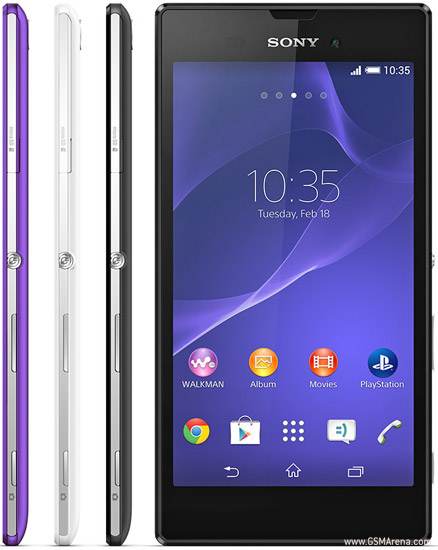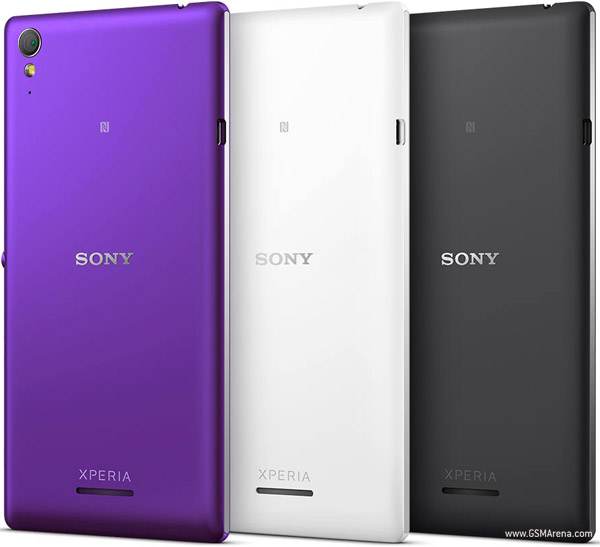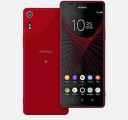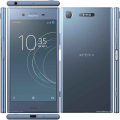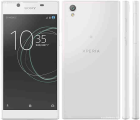Sony Xperia T3 Prices
Important Note.
- All prices are in Pakistani Rupee (PKR)
- Prices may vary at stores and our effort will be to provide you with the updated prices.
- The latest price of Sony Xperia T3 was obtained on 17 مئی, 2019. The prices at the original stores had been updated on the respective mentioned dates.
- Find out WhatMobile price has dropped in Pakistan by selecting Notify Price Drop button
- Find out WhatMobile has better specifications by clicking Add To Compare Button find out what Mobile has better reviews by visiting our reviews section
- Find out WhatMobile is cheaper on which retailer by clicking Compare prices from retailers button
Search Terms
- Sony Xperia T3
Specifications
| GENERAL | |
| 2G Network | GSM 850 / 900 / 1800 / 1900 - all versions |
|---|---|
| 3G Network | HSDPA 900 / 2100 - D5103 HSDPA 850 / 900 / 1900 / 2100 - D5102 HSDPA 850 / 1700 / 1900 / 2100 - D5106 |
| 4G Network | LTE 800 / 900 / 1800 / 2100 / 2600 - D5103 LTE 700 / 1700 / 2100 / 2600 - D5106 |
| Sim | Micro-SIM |
| Announced | 02/06/2014 |
| Status | Available. Released 2014, July |
| BODY | |
| Dimensions | 150.7 x 77 x 7 mm (5.93 x 3.03 x 0.28 in) |
| Weight | 148 g (5.22 oz) |
| DISPLAY | |
| Display Size | 720 x 1280 pixels, 5.3 inches (~277 ppi pixel density) |
| MultiTouch | Yes, up to 4 fingers - Triluminos display - Mobile BRAVIA engine 2 |
| SOUND | |
| AlertTypes | Vibration; MP3 ringtones |
| LoudSpeaker | Yes |
| 3.5mm jack | Yes |
| MEMORY | |
| CardSlot | microSD, up to 32 GB |
| Internal | 8 GB, 1 GB RAM |
| DATA | |
| GPRS | Up to 107 kbps |
| EDGE | Up to 296 kbps |
| Speed | HSDPA, 42 Mbps (21 Mbps - D5102); HSUPA, 5.8 Mbps; LTE, Cat4, 50 Mbps UL, 150 Mbps DL |
| WLAN | Wi-Fi 802.11 a/b/g/n, dual-band, Wi-Fi Direct, DLNA, Wi-Fi hotspot |
| Blue Tooth | v4.0, A2DP, LE |
| NFC | Yes |
| USB | microUSB v2.0, USB Host |
| CAMERA | |
| Camera Primary | 8 MP, 3264 x 2448 pixels, autofocus, LED flash |
| Camera Features | Geo-tagging, touch focus, face and smile detection, HDR, panorama |
| CameraVideo | 1080p@30fps, HDR |
| CameraSecondary | 1.1 MP, 720p@30fps |
| FEATURES | |
| Processor Cores | Quad-Core |
| OS | Android OS, v4.4.2 (KitKat) |
| CPU | Quad-core 1.4 GHz Cortex-A7 |
| Sensors | Accelerometer, gyro, proximity, compass |
| Messaging | SMS (threaded view), MMS, Email, IM, Push Email |
| Browser | HTML5 |
| Radio | FM radio with RDS |
| GPS | Yes, with A-GPS, GLONASS |
| Java | Yes, via Java MIDP emulator |
| Colors | Black, White, Purple |
| Others | - ANT+ support - SNS integration - Active noise cancellation with dedicated mic - Xvid/MP4/H.263/H.264 player - MP3/eAAC+/WMA/WAV/Flac player - Document viewer - Photo viewer/editor - Voice memo/dial - Predictive text input |
| BATTERY | |
| Battery | Non-removable Li-Ion 2500 mAh battery |
| StandBy | Up to 639 h (2G) / Up to 688 h (3G) |
| TalkTime | Up to 12 h 46 min (2G) / Up to 14 h 47 min (3G) |
| MISC | |
Reviews

Introduction
The Sony Xperia T3 is a large phone. With a 5.3-inch screen it has a similar size display to the 5.2-inch Xperia Z2, Sony's flagship Android for 2014.
However, it doesn't have a sky-high price to match. The aim of this model is to give you the scale of one of the top-end phones, while chipping away at the specs to cut down costs.
Last year, this phone's sibling the Xperia T2 Ultra tried a similar trick, but overdid the recipe with a huge 6-inch screen, becoming the phone no one wanted to hold. But this one stays a much more normal size, making it a good deal easier to handle.
There's one question that matters most: has it been priced right? The Sony Xperia T3 has none of the flashiness of the top Sony phones, but still costs £300 (US/AUS price TBC) SIM-free.
Not only is that twice the price of the similarly-specced 4G Motorola Moto G and a good chunk above the expected price of the reportedly 5-inch Moto G 2, it's more than some of last year's top phones, which are still available to buy.

With much more powerful phones like the Google Nexus 5 and LG G2 are still going strong for between £250 and £300 there's little room for a mobile like the Sony Xperia T3.
A bit expensive? Definitely. However, if you manage to snag yourself a deal on contract, there's actually very little to seriously dislike about the Sony Xperia T3.
The Sony Xperia T3 is a cut-price take on the Xperia Z2, Sony's Android monster. You get a bit of metal trim on the sides for the characteristic Xperia look, but they're just thin little inlays where as the Z2 is a predominantly metal-bodied phone.
This one is plastic, and lacks the glass back of its big brother too. The result is a lower-key look, but not one that's in any way bad.

The Sony Xperia T3 has a two-tone silver and black design, and its key calling card is how slim it is. At 7mm thick it's one of the slimmest phones in town. Sony boasts it's the thinnest in its size class.
Slight plastic bloom around the edges and a slightly bigger screen gives the Xperia T3 a marginally wider footprint than the Xperia Z2, but because it's a good 1.2mm thinner it may be easier to handle.
We complained that Sony's flagship could feel a bit awkward thanks to its big, blocky design, but the curved-back shape of the Xperia T3 is slightly more accessible.

I also found that a soft-touch plastic phone feels a lot less likely to fracture in a million pieces should you drop it, unlike the Xperia Z2's glass back.
As ever with a large phone, though, try it out on the high street if you can. It'll still be simply too big for some of you.
Like Sony's other mid-range and high-end Xperia phones, the Sony Xperia T3 does not let you get access to its insides. The back is sealed.

You get into the microSD and microSIM slots using a flap on the side of the phone, and there's an exposed microUSB slot on the other. This is a dead giveaway that the Xperia T3 does not have any form of waterproofing.
It does, however, have elements of Sony's usual Omnibalance design. The power key sits right in the middle of one side, making it easy to access, and the volume buttons sit below, where they'd usually be above in a smaller phone.
All the buttons are easy to access, minimising the possible negative effects of a phone this big. Sony just about gets away with it and it's impressive stuff.
You also get a physical camera button, something not all that common in Android phones these days.
Screen
The main draw of the Sony Xperia T3, other than being a bit cheaper than most phones this size, is the screen. And it's a whopper.
You get a 5.3-inch IPS LCD display of 1280 x 720 pixel resolution. Smartphone enthusiasts may have already spotted that this isn't a particularly high resolution for a phone of this size. It's the same resolution as the Motorola Moto G, a much cheaper 4.5-inch phone.
Sharpness is not quite as good as some other phones in this price range, including the LG G2, Nexus 5 and, if you're up for putting the effort in to get hold of one, the OnePlus One.
I'm happy to report that the slightly low 277ppi pixel density shows as a slight softness in the edges of text, but there's no obvious pixilation. At its price point the Sony Xperia T3's resolution is galling. But its effects are relatively minor.

Sony has also clearly put a lot of effort into getting the screen to look right. Colour calibration is very similar to that of the Sony Xperia Z2. That means you get vivid, well-saturated colours that are just a shade punchier than what is strictly accurate. But it's a really charming display character, perhaps thanks to Sony's Triluminous tech.
Contrast and black levels are pretty great too, helping to dim the disappointment of the resolution a bit. There's a fair bit of variance in the luminance of the backlight depending on the angle you hold the phone at, but no contrast shift and viewing angles are perfectly sound.
Another neat element of the screen is that it incorporates the soft keys. There are no dedicated physical ones on the Xperia T3. In a smaller-screen phone this move can lead to a display feeling a little cramped or small, but with 5.3 inches of screen and their ability to disappear during gaming or video playback, it's no issue here.
A screen of this size is a great canvas for mobile media activities too. Good colour and contrast are, arguably, as important as resolution with things like films and games.

However, I can't ignore that there are superior phone screens around at that price – 1080p ones like the Nexus 5's and LG G2's.
Where the limited resolution really shows up is web browsing. Full web pages would look sharp on a 1080p screen of this size, but small text isn't quite as defined on the Sony Xperia T3. On a cheaper phone this would be almost cruel to complain about, but it's a valid criticism of a £300 one.
What about the outdoors? A day of bright blue skies and bright shine gave me the perfect chance to see whether outdoors visibility was going to be compromised. However, it is pretty good here too.

A decent anti-reflective coating, a zero (or at least not much) air gap screen-structure and respectable top brightness all make the Sony Xperia T3 pretty fine for use outside. As you'd expect, there's an ambient light sensor to let screen brightness take care of itself.
For real screen geeks there are some screen customisation available too. Unlike something like the Galaxy S5, you don't get modes that dramatically alter colour saturation, but you can tweak the Sony Xperia T3's white balance using red green and blue sliders.
This lets you affect how "warm" and "cool" it is, although it's not exactly the most accessible set of controls around. Nokia's warm-cool slider is much easier to use for non-nerds.
Key features
As the Sony Xperia T3 is basically a cut-down version of the Sony Xperia Z2 with a lower price point you have to wonder – what exactly are we missing out on?
Let's start with the extras you do get. The Xperia T3 has a nice-looking multi-colour notification LED that's a cut above the very basic one of phones like the Xperia E1.
There's also NFC to add to the list of wireless connectivity types that are more-or-less assumed – Wi-Fi (up to the n standard), Bluetooth 4.0 and GPS.
As already mentioned, the Sony Xperia T3 also gets you a microSD card slot. If anything these are more common in cheaper phones than expensive ones as a lack of internal storage virtually mandates one.

Most important of the lot, though, is 4G. While it's rapidly becoming standard in mid-range phones, 4G still gives the Xperia T3 an essential bit of future-proofing. It uses Cat4 LTE, which is more than capable of the sorts of maximum speeds 4G networks currently dole out.
Unfortunately the roll-call of things the Sony Xperia T3 misses out on is a bit longer than its noteworthy inclusions.
Internal storage is pretty low at just 8GB. It wouldn't be too much to ask Sony to include 16GB in this phone, even if there is a microSD slot. After all, not all games can simply be plonked onto SD memory.
After the Xperia T3's software has eaten away at the storage, you get around 4GB to play with. TechRadar's standard test games alone gobble up a couple of these.

At the same price, the LG G3 gets you 16GB memory, and you can even get the 32GB Nexus 5 for less if you shop around.
My next moan is about RAM. The Xperia T3 has just 1GB of RAM where others at the price have 2GB. Heck, the Xperia Z2 has 3GB. The importance of RAM is hard to quantify in simple terms – you don't fill it with games like conventional storage, but it gets eaten away at whenever your phone runs any sort of app process, and when you run low your phone runs as slow as an asthmatic couch potato.
Its impact will be longer-term, and it will limit how much punishment you can give the Xperia T3 – how many apps you can install before it starts wheezing.
There's also no IR transmitter. You get one in some phones at this price (again see the LG G2), and they let you send the same sort of signals as home entertainment remote controls. Ever had a Logitech Harmony remote? It's like that. Not had one? It means your phone can control your whole lounge's setup.

An IR transmitter is far from an essential feature, but it's a sign that all the little extras have been stripped from the phone.
The final bit of lovely Xperia gloss missing is the stereo speaker array you get in an Xperia Z2. Instead, there's a rather more standard mono speaker on the back.
It doesn't get you a nice stereo image, and the tone is typical of a slim smartphone – it's fairly thin, very bass-light, but offers decent volume in its class. It's not bad, just ordinary.
HTC set the bar for speakers in this sort of big-screen, mid-range class with the HTC Desire 816, which has the same beefy BoomSound speakers as the HTC One M8 and HTC One Mini 2.
The missing bits of the Sony Xperia T3 will make the phone seem a little basic to the enthusiastic Android fan. I don't think that they're too drastic cuts for the more casual user, but when you consider how much we're being asked to pay, I'm not convinced the equation entirely adds up.
Interface and performance
In many respects the Sony Xperia T3 is quite a simple, pared-back phone. However, it has the same up-to-date interface as the Sony Xperia Z2.
The same is not true of other recent Sony phones, including the Xperia E1 and Xperia M2. Here you get a few extra visual refresh elements that make the phone seem as clean and clear as something like the Nexus 5's Google Now/Experience interface.
From a quick glance of the interface it looks a lot like old versions of the Xperia UI, but look closer and you'll see it actually looks a lot fresher.
Sony has got rid of the extra lines and the widgets/apps divide in the apps menu, and altered the font. This results in a very attractive and clear interface that looks and feels a lot like a mildly tweaked version of standard Android. Among the many overbearing custom interfaces, that's a very good thing.

It does add a few features, though. The apps menu gets its own Sony interface screen, and there are a bunch of widgets that link into Sony's preinstalled apps.
Just about the only contentious part of the Sony Xperia T3's otherwise remarkably tasteful interface is the breadth of apps that come as part of it. There's nothing new – it's the same line-up you get with the Xperia Z2 or M2.
There are Sony's music, movie and photo apps, a Sony app store and a largely redundant social/news feed app called Socialife News. None of these are truly offensive and some, like Walkman, are pretty useful, but you have no option to uninstall them.

Sony includes a bunch more apps, like the Shazam-a-like TrackID, an office suite and a couple of image editing apps. But you can uninstall these.
Does Sony throw-in too many extras? Yes. But I'd rather have a nice-looking and feeling UI with a few extra apps than an all-round horrible interface with nothing but Google's apps there.
Despite the fact that the Sony Xperia T3 has just 1GB of RAM and the same class of Snapdragon 400 processor as the entry-level Moto G, performance is fairly good. As the interface is not a significant drain on performance and the phone 'only' has to render in 720p, there's no major lag.

That 1GB of RAM is going to limit how many apps you can install before you see a performance hit, though. Don't you find it a bit of a swizz that the Xperia T3 uses more-or-less the same processor as the £99 EE Kestrel?
It doesn't have any more power than those low-end Snapdragon 400 phones, either. In Geekbench 3 the phone scored around 1361 points, similar to those phones.
In general use the Snapdragon 400 chipset is more than capable of keeping Android 4.4.2 quick. But with things like 3D games you're not going to get quite as fancy-looking effects as you'd get with a Snapdragon 800 or 801 CPU.
With an LG G2, for example, Dead Trigger 2 is all shiny surfaces and lighting effects. With the Sony Xperia T3, the visuals look a bit flatter – still detailed and sharp despite the 720p resolution, but you lose out on some of the more processor-intensive effects.
Battery life and the essentials
The Sony Xperia T3 doesn't let you get near its battery. It's sealed behind the back plate.
However, I do know it's a 2500mAh unit. That's a good deal smaller than the similarly sized Xperia Z2's 3200mAh, but then this phone also uses a lower screen resolution.
I didn't find that it all balanced out perfectly, though. Battery performance is less than perfect in the Xperia T3.
In TechRadar's usual battery test, a 90-minute 720p video playback where the screen is set to maximum brightness, the phone lost a hefty 27% of charge. That means when left to play video, it'll only last for around five and a half hours.

It's not a great result. However, it was in normal use that I really got the measure of the Xperia T3. It's simply a bit too easy to run down in a day, and as battery level drops off pretty swiftly in the final 10% rather than clinging onto every digit like some other phones, it just doesn't give you the security of the best.
The most obvious reasons for this include that the battery is not gargantuan, that the screen is quite a drain and tends to be fairly generous with its brightness level, and that the Snapdragon 400 doesn't quite have the same efficiency as the Snapdragon 800 chipset.
As usual, though, Sony does provide some ways to make up the difference itself, with power-saving modes. In my tests I used the standard battery mode with only queuing of background data enabled. This doesn't stop apps from accessing background data, but organises them into batches so the mobile internet connection isn't working in drips and drops 24/7.
There are three extra modes – stamina, low-battery and location-based Wi-Fi. Stamina mode claims to just-about double stamina by restricting performance and apps' access to background data.

Low-battery mode is an even more severe battery-saver for when charge level gets low. Location-based Wi-Fi automatically switches Wi-Fi on and off depending on whether the area you're in has any saved Wi-Fi networks or not.
Stamina mode effectively stops the battery dead when you're not using the phone. So while the Sony Xperia T3 doesn't last all that long going full pelt, there are more than enough ways to manage the phone's performance to improve longevity.
The phone doesn't help itself in other ways, though. For example, the vibration feedback motor is far too strong, sounding like the revving engine of a tiny little car should you have it set to go off when you press a key on the keyboard (it's set to do this by default). This eats up battery, not to mention feeling so weird I turned it off.

The Sony Xperia T3 also gets quite hot when searching for a mobile internet signal, much like the Xperia Z2. We never received any overheating error messages, but as with other Xperias the extra heat seems to be a result of trying to make the phone as slim as it is.
The hot zone is up at the top of the phone, where its brains sit, rather than directly under your hand, but you do still notice it getting toasty at times.
Coming back to the basics, call quality is perfectly good. Top-end clarity seemed a little worse than the Xperia Z2, speaking from memory, but top volume is decent and the call speaker has a good, robust tone.
Camera
The Sony Xperia T3 has an 8MP main camera, and uses the same sort of camera app as the other Xperia phones. By default, it boots into a superior auto mode that is a true point and shoot affair.
You just select what you want to focus on and the app does the rest, picking the settings to use. It displays them at the corner of the screen too, which is a nice extra.

It's a little less prescriptive than it has been in the past – at one point it didn't even let you pick a subject, or shoot at full resolution. As standard the Xperia T3 actually shoots 5MP 16:9 images, and you need to switch to 4:3 shape photos to use the whole of the camera sensor.
However, superior auto still doesn't give you access to the HDR mode, so it's still not a 100% go-to mode. To use HDR you need to skip to the manual mode, which lets you pick scenes (and HDR) yourself.

I'd ideally like to see Sony's superior auto mode adopt an HDR switch in future, as it's the easiest way to make mobile phone photos with real pop. The Xperia T3's HDR mode is pretty effective too, and photos often look dull and underexposed without it.
In good lighting, the Xperia T3's photos are quite good, with decent colour reproduction that flops over into oversaturation at times – better than being horribly washed out, but it doesn't leave photos looking very natural.

There is also quite a lot of noise, which degenerates into fairly serious purple colour noise with indoors or low lighting.
The camera's okay but not great. And low-light performance is worse than some of the other Xperia phones. Where the Xperia Z2 massively ramps-up the brightness and calls in extreme noise reduction for very low-light shots in order to make them much clearer, the Xperia T3 lets them stay quite dark.
It means the phone maintains colour fidelity better in low light, but also means you can't really take true low-light shots without using the LED flash.

However, you do get loads of fun modes. There's the augmented reality mode that puts 3D dinosaurs or fish into your photos (perfect for entertaining the kids), and a good crop of creative filters, some of which are a good deal more dynamic than the norm.
Video capture tops out at 1080p resolution – no 4K here – and there's no optical stabilisation. At the price, both the Nexus 5 and LG G2 offer optical image stabilisation, and the LG G2 offers better image quality all-round.

The front selfie camera uses a 1.1-megapixel sensor that produces fairly grainy images. It can cope pretty well with limited indoor lighting, though, so it'll do the job for casual pics and video perfectly well.
Camera samples
Click here for the full res image
Click here for the full res image
Click here for the full res image
Click here for the full res image
Click here for the full res image
Click here for the full res image
Click here for the full res image
Click here for the full res image
Click here for the full res image
Click here for the full res image
Hands on gallery










Verdict
The Sony Xperia T3 is a tricky phone. It offers a good core experience thanks to its decent screen and clear software. However, when you look at the spec and the price, you can't help but think there are better deals out there.
Like the HTC Desire 816, it can't really compete with the end of line phones from last year that are still pretty easy to get hold of. The LG G2 and Nexus 5 are the two obvious examples, but if you're looking to get a contract, you may even be able to get the Galaxy S4 at a similar price.
We liked
The interface of the Xperia T3 is nice and simple. It may have a bit of app bloat, but it still feels great in-use.
A super-slim frame makes the Xperia T3 reasonably easy to handle despite the large screen and Sony has made sure all the buttons are easy to reach even though the phone is big.
We disliked
At the price I'd hope to see a 1080p screen. While generally of good quality, the display is still a bit of a disappointment.
Using 1GB of RAM and a Snapdragon 400 CPU in a £300 phone seems a bit rich when 2GB/Snapdragon 800 alternatives are available at the price.
8GB of storage is a little low for a phone of this grade, and limits how many games you can install despite the microSD slot.
Final verdict
Aside from being quite big, the Sony Xperia T3 is very easy to get on with. Aside from a few cut-down and missing features there are no deal-breaking issues. However, it is too expensive when you compare it to other phones at the price.
Unless you're desperate for a big screen Sony handset and don't have the budget to get the Xperia Z Ultra, you're probably best off looking elsewhere.
Write Your Own Review
My Recent Reviews
- Be first to post review for this product.
comments powered by Disqus




